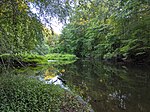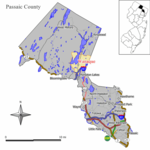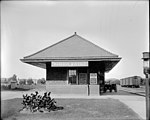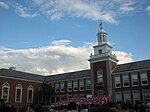Haskell, New Jersey

Haskell is an unincorporated community located within Wanaque Borough, in Passaic County, New Jersey, United States. Haskell was formed in 1898 as a company town for a smokeless powder mill of the Laflin & Rand Powder Company. The town was named for Laflin & Rand company president Jonathan Haskell. The Haskell powder mill manufactured the W.A. .30 caliber smokeless powder used in United States Army service rifles until 1908. Laflin & Rand was purchased by DuPont in 1902, and the powder mill ceased operations in 1926. The area is served by the United States Postal Service as part of ZIP Code 07420. The community is located in suburban Northern New Jersey. As of the 2010 United States Census, the population for ZIP Code Tabulation Area 07420 was 4,942.
Excerpt from the Wikipedia article Haskell, New Jersey (License: CC BY-SA 3.0, Authors, Images).Haskell, New Jersey
2nd Avenue,
Geographical coordinates (GPS) Address Nearby Places Show on map
Geographical coordinates (GPS)
| Latitude | Longitude |
|---|---|
| N 41.028333333333 ° | E -74.296111111111 ° |
Address
CVS
2nd Avenue
07420 , Haskell
New Jersey, United States
Open on Google Maps








